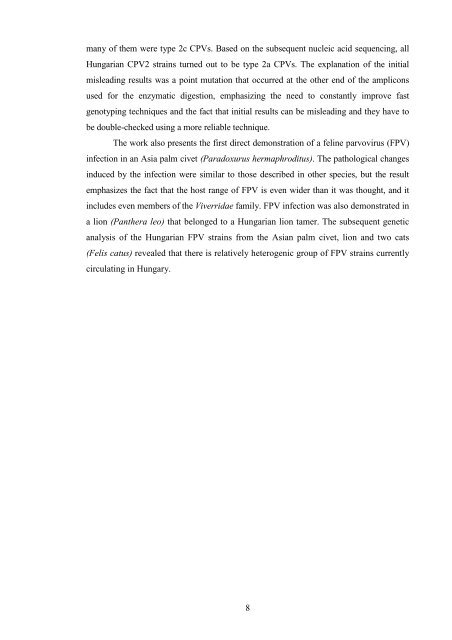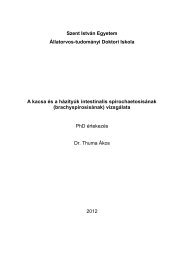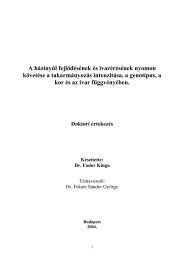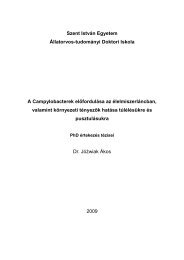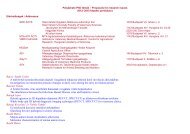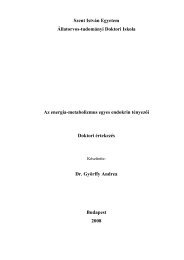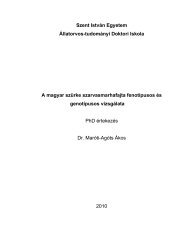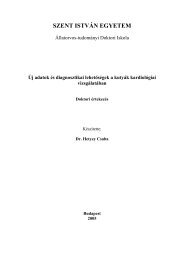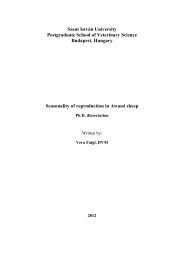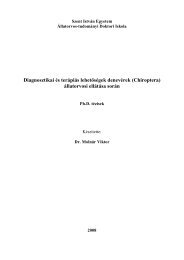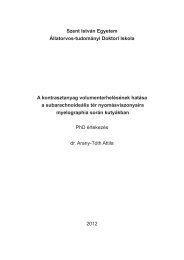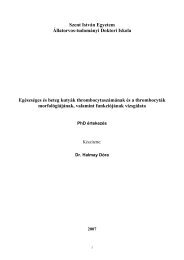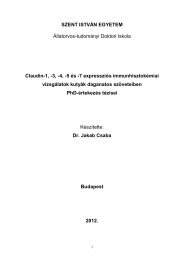PhD Thesis Demeter Zoltan
PhD Thesis Demeter Zoltan
PhD Thesis Demeter Zoltan
Create successful ePaper yourself
Turn your PDF publications into a flip-book with our unique Google optimized e-Paper software.
many of them were type 2c CPVs. Based on the subsequent nucleic acid sequencing, all<br />
Hungarian CPV2 strains turned out to be type 2a CPVs. The explanation of the initial<br />
misleading results was a point mutation that occurred at the other end of the amplicons<br />
used for the enzymatic digestion, emphasizing the need to constantly improve fast<br />
genotyping techniques and the fact that initial results can be misleading and they have to<br />
be double-checked using a more reliable technique.<br />
The work also presents the first direct demonstration of a feline parvovirus (FPV)<br />
infection in an Asia palm civet (Paradoxurus hermaphroditus). The pathological changes<br />
induced by the infection were similar to those described in other species, but the result<br />
emphasizes the fact that the host range of FPV is even wider than it was thought, and it<br />
includes even members of the Viverridae family. FPV infection was also demonstrated in<br />
a lion (Panthera leo) that belonged to a Hungarian lion tamer. The subsequent genetic<br />
analysis of the Hungarian FPV strains from the Asian palm civet, lion and two cats<br />
(Felis catus) revealed that there is relatively heterogenic group of FPV strains currently<br />
circulating in Hungary.<br />
8


